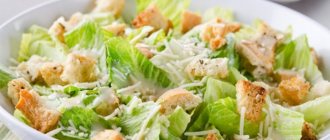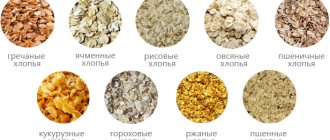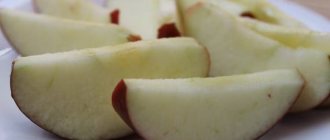Preparing vegetable puree
Zucchini is one of the first foods introduced into complementary foods, as it does not cause allergic reactions and strengthens the immune system. To prepare zucchini puree, wash the vegetable, remove the peel and remove the seeds. Cut the zucchini into small cubes and place in boiling water. There should be a little of it: it is enough if it slightly covers the cubes. No need to add salt, sugar and various spices. You need to cook the zucchini for the first feeding for about ten minutes, then cool it and wipe it with a sieve or grind it with a blender. Then heat the resulting puree over low heat for no more than two minutes and cool. To make the dish more liquid, dilute it with formula or breast milk.
You can also use cauliflower or broccoli to make baby vegetable puree. Remember: Darker-colored broccoli contains more nutrients. For the puree you will need several cabbage inflorescences, which should be thoroughly washed and soaked in boiled water for three to four hours. Then boil the broccoli until completely soft in unsalted water. Soft vegetables can be easily pureed using a sieve and a fork, so there is no need to use a blender. The main thing is that there are no large pieces in the puree so that the baby does not choke. If you need to dilute the puree, make it thinner - add vegetable broth, water, breast milk or formula.
Make your child mashed potatoes. Cut the skin off the potato and soak it in clean water for a day to remove excess starch. Then boil the potatoes in unsalted water for fifteen to twenty minutes. After draining almost all the water from the pan, thoroughly mash the tuber in the remaining broth. To make the puree more airy and tender, beat it with a mixer.
Pumpkin is also perfect for feeding babies - both fresh and frozen. The washed, peeled, seeded and sliced pumpkin should be simmered over low heat for about twenty minutes. Readiness is determined by softness. Pumpkin slices need to be ground using a sieve; a blender is no help here - it may leave behind incompletely ground fibers that can cause a gag reflex in the baby. Mix the resulting mass with breast milk or formula, and when the baby masters a new dish, try adding applesauce to it.
If you want to make vegetable puree for your baby from carrots or with the addition of this vegetable, do not forget that it needs to be cooked longer than others. When cooking, the carrot pieces will need about thirty to forty minutes until they become soft enough. In a double boiler, carrots are cooked for about an hour.
You can prepare vegetables in advance for the next feeding and freeze them - this will speed up the preparation process. Prepare bags for freezing vegetables; those with a zipper are best. Zucchini, pumpkin, and peppers should be cut into cubes, and broccoli and cauliflower should be divided into inflorescences. You can freeze and store vegetables at temperatures from -18 to -20 degrees.
Features of the menu for a child from 6 months
In the menu of a 6-month-old baby, pediatricians recommend including such products and dishes prepared from them as: - cottage cheese;
- soups; - porridge; - meat; - cereals. All food that the baby receives must be ground very carefully. The chewing reflex in a small child has not yet developed, so any lump in food can cause him to vomit.
By 6 months, babies usually switch to five meals a day, the break time between these meals should be from 3.5 to 4 hours, it is also worth considering the night break, approximately 10 to 11 hours.
Preparing fruit puree
Before choosing fruits, make sure they are not treated with chemicals. To prepare fruit puree for the first feeding with your own hands, select fruits without flaws or defects. Peel, wash and cut fruits only just before cooking, following sanitary rules. To prepare the puree, it is better to use a double boiler, and you should not cook the fruits for a long time so that they do not lose their beneficial properties. Use a blender to chop or puree the fruit with a sieve, then pour in the broth and bring to a boil. The consistency of the puree depends on the child’s tastes.
Usually the first fruits for feeding children are apples and pears. To prepare applesauce for your baby, take two apples, preferably green or yellow. Apples should be washed well, peeled, seeds and core removed. Cut the apples into pieces and place them on the bottom of the pan, filling with clean water so that it barely covers the slices. Bring to a boil and immediately reduce heat, then cook the apples for about ten minutes. Let them cool, then puree with a blender or fork. As with vegetables, it's best to avoid adding sugar. Pear puree is cooked using the same principle.
Cooking in a slow cooker helps preserve the beneficial properties of foods. Place the vegetable or fruit cubes in the slow cooker for twenty minutes, setting the cooking or stewing mode. Then proceed to making puree as described above.
Rice porridge for a baby from 6 months
It is not advisable to prepare rice porridge for a child from whole grains from 6 months to a year. To prepare it, it is better to use rice flour. Use the following ingredients: - 15 g of rice flour; — 150 ml of water; — 150 ml of adapted milk; - 5 g vegetable oil.
After the water boils, you need to carefully pour rice flour into it in small portions. Cook over low heat for about 10-15 minutes. The porridge is diluted with very hot milk. It needs to be brought to a boil and allowed to simmer for 5 to 10 minutes. Add a little vegetable oil to the finished dish.
Cooking porridge
To prepare porridge at home, you need to grind the cereal to flour, and then cook it in water without adding sugar or salt. Modern recipes for complementary feeding cereals recommend choosing low-allergenic, gluten-free cereals: rice, corn or buckwheat.
Rules for preparing porridge:
- Maintain the proportions of water and ground cereal.
- You should not add water during the cooking process.
- Do not stir rice and buckwheat during cooking.
The first porridge for your baby can be very liquid - a teaspoon of ground cereal flour per 100 ml of water, but after a couple of weeks you can double the volume of cereal. If desired, you can add fruit puree to the porridge.
Place the ground cereal strictly in boiling water, and then leave it to swell so that this does not happen in the baby’s stomach.
Preparation and proportions
For a child of 6 months of age, prepare porridge at 5%, that is, only 5 grams of cereal are poured into 100 ml of water. Start complementary feeding with 1 teaspoon of the product and increase the dose daily. After 10 days, the amount of porridge eaten by the child reaches 150g. If the baby did not experience rashes or other allergic reactions during this period, the concentration increases to 10%, after which complementary feeding continues according to the same pattern. If the child is well tolerated, when the child is completely accustomed to the new dish, you can introduce another type of this product (another grain) into his diet. For artificially-bred children, the period when this nutrient is introduced begins much earlier - they can enjoy the taste of buckwheat and corn porridge starting from 4-5 months of age. By six months, they are already familiar with this dish, as well as with fruit and vegetable purees. Therefore, it would not be amiss to add cottage cheese, kefir and pureed egg yolk to their diet as an additional ingredient. How to give correctly:
- Day 1 - 5g (teaspoon);
- Day 2- 10g;
- Day 3 - 15g;
- Day 4 - 20g;
- Day 5 - 50g;
- Day 6 – 100g;
- Day 7 to 10 – 150g.
If parents doubt whether they should start complementary feeding at this age or whether they can wait, it is necessary to take into account that during this period, the baby needs more nutrients and mother’s milk is no longer enough. His first teeth are beginning to erupt and grow, he is already moving more, and accordingly, he is expending more and more energy every day. The sixth month is perhaps the most suitable period to expand the range of foods consumed. The product has high nutritional value, as it contains microelements, carbohydrates (60%) and a small amount of proteins, as well as vitamins B2, magnesium, iron. Cereals include dietary fiber, which has a positive effect on intestinal function. In addition, they increase the number of beneficial microorganisms (bacteria), which are essential for maintaining a normal digestive process.
Feeding is carried out 5 times a day. Often parents do not know that in order to prepare porridge, they must adhere to a certain technology, because what an adult can eat cannot be given to a child. Buckwheat is first soaked for several hours in boiled warm water, after which it is boiled for 40-50 minutes. After which, it is rubbed through a sieve. It will be especially useful for toddlers if they are prone to allergies. In this case, it is prepared without adding milk. For children without any health problems, in order to achieve the desired consistency, the contents are diluted with pre-boiled milk, after which the porridge must be cooked for another 5 minutes. Contains a large amount of iron. If a baby suffers from constipation, it must be replaced with rice. Corn porridge is prepared using the same principle, but with the difference that the cereal is soaked in warm water for several hours. And then, all preparation is carried out according to the same principle as with buckwheat. As for rice, the whole grain should never be cooked. First you need to grind the cereal, or even better, use ready-made rice flour. The dish is diluted with adapted milk, with the addition of 5g of vegetable or butter (for children with unstable stools, replace it with buckwheat or corn). You can add various vegetables and fruits to the porridge, the taste of which the baby already knows.
You should not introduce semolina porridge into complementary foods for children under 1 year of age. This cereal has the property of impairing the absorption of calcium, which can ultimately lead to the development of rickets.
Cooking meat
For the first complementary foods, the ideal choice would be turkey and rabbit meat, while pork, chicken, and veal are introduced after a year.
To make your own meat puree, pass the meat through a meat grinder and steam it, or, conversely, first boil the meat and then pass it through a meat grinder.
To steam meat, add more water to the raw minced meat, then it will become more tender. Boil water in a saucepan and place the dishes with minced meat in it. Cover with a lid and leave for ten to fifteen minutes. For the non-steam method, you need to boil the meat for twenty minutes, drain the broth, then add water again and cook until tender. It is not recommended to add salt to meat puree.
At home, it is difficult to make an easily digestible product from meat, since it contains a lot of coarse fibers, so before reaching one year of age it is better to use ready-made puree from the store.
Cooking cottage cheese
To prepare 50 g of sour cottage cheese, take 300 ml of kefir. It needs to be poured into a saucepan and heated over low heat until it curdles. Cool the resulting mass and pour into a sieve with gauze. The remaining curd on the gauze after the whey has drained can be rubbed until a more uniform consistency is formed.
For unleavened or calcified cottage cheese, you will need milk and a solution of calcium chloride, which is sold in pharmacies. The milk must be boiled, then cooled and calcium added in the proportion: 3 ml of solution per 300 ml of milk. Bring the mixture back to a boil. After it curdles, prepare it in the same way as described in the first method.
Vitamins all year round
In winter, it is more difficult to get fresh fruits, which are so beneficial for the baby, so preparing puree in advance is an excellent alternative. The recipe for baby puree for the winter is very simple. You will need apples, peaches, pears and other fruits. They need to be peeled and seeded, chopped and boiled in a saucepan for fifteen minutes. Then you need to grind the resulting mass in a blender and put the mixture back into the pan, adding a little sugar. Boil and cook for about ten minutes, stirring thoroughly. Place the finished puree into sterilized jars, roll up the lid and leave them to cool.
To sterilize jars, use a microwave or oven, or sterilize the container over steam.
Let your baby always be fed, healthy and cheerful, receiving all the necessary vitamins and useful microelements all year round!











